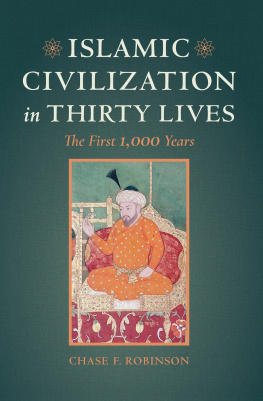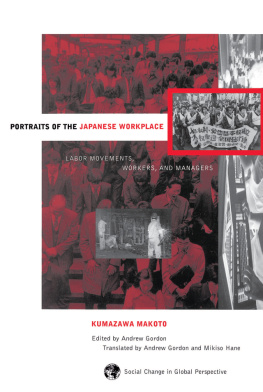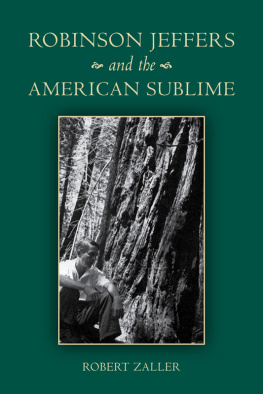Robinson - After camp portraits in midcentury Japanese American life and politics
Here you can read online Robinson - After camp portraits in midcentury Japanese American life and politics full text of the book (entire story) in english for free. Download pdf and epub, get meaning, cover and reviews about this ebook. City: Berkeley;United States, year: 2012, publisher: University of California Press, genre: Politics. Description of the work, (preface) as well as reviews are available. Best literature library LitArk.com created for fans of good reading and offers a wide selection of genres:
Romance novel
Science fiction
Adventure
Detective
Science
History
Home and family
Prose
Art
Politics
Computer
Non-fiction
Religion
Business
Children
Humor
Choose a favorite category and find really read worthwhile books. Enjoy immersion in the world of imagination, feel the emotions of the characters or learn something new for yourself, make an fascinating discovery.
After camp portraits in midcentury Japanese American life and politics: summary, description and annotation
We offer to read an annotation, description, summary or preface (depends on what the author of the book "After camp portraits in midcentury Japanese American life and politics" wrote himself). If you haven't found the necessary information about the book — write in the comments, we will try to find it.
After camp portraits in midcentury Japanese American life and politics — read online for free the complete book (whole text) full work
Below is the text of the book, divided by pages. System saving the place of the last page read, allows you to conveniently read the book "After camp portraits in midcentury Japanese American life and politics" online for free, without having to search again every time where you left off. Put a bookmark, and you can go to the page where you finished reading at any time.
Font size:
Interval:
Bookmark:
| Text: | 10/13 Aldus |
| Display: | Aldus |
| Compositor: | Westchester Book Group |
| Indexer: | Gabriel Sguin |
| Printer and binder: | IBT Global |
1. Political Science?
FDR, Japanese Americans, and the
Postwar Dispersion of Minorities
The term political science usually refers to all the wayspolls, models, and statisticsthat academics have used to bring scientific principles to the study of political behavior. Yet my use of these two words comes from a completely opposite direction and refers to the use of science for political purposesan unexamined aspect of the domestic and foreign policy of President Franklin Roosevelt during the years of World War II. FDR and his advisors, believing that concentration of minority groups, especially urban-based, within established nations bred poverty and intergroup tensions, sought to alleviate conflict by scientifically planning the mass migration and absorption of unwanted groups into rural and underpopulated areas. Through the mass dispersion and assimilation of ethnic and racial minority populations, the United States would promote peace and economic growth.
My focus is divided into two distinct, though interrelated, dispersion initiatives. The first one took place within the United States. Here, during 1943-44, Roosevelt formulated plans to distribute incarcerated Japanese Americans in small groups throughout the country to solve the Japanese problem. He meanwhile considered various proposals for the scattering of Jews and other immigrants. On the international side, FDR commissioned the M Project (the M standing for migration), a top-secret anthropological study by a team of scholars that eventually encompassed some six hundred reports, essays, and translations of articles on human migration and settlement. The goal of this project was to provide the president with expert advice on the possibilities for large-scale postwar relocation of millions of European refugees and members of unwanted populations to Latin America in accordance with Darwinian racial principles. The study of these interconnected programs reveals both the complexities of Franklin Roosevelt's views of race and society and the paradoxical nature of social engineering for Issei and Nisei.
Franklin Roosevelt's interest in demographics and migration developed early. As a child he noted the tensions stirred by the presence of a French Canadian minority in his grandfather's hometown of Fairhaven, Massachusetts. When he grew to manhood and moved to New York City, he was regularly exposed to nativist fears of immigrants and to the countervailing efforts of settlement workers (including his future wife, Eleanor) and other progressives to Americanize the newcomers. In 1920, during his unsuccessful campaign as Democratic candidate for vice president, the young FDR expressed his ideas on the subject in an interview with the daily newspaper Brooklyn Eagle:
Our main trouble in the past has been that we have permitted the foreign elements to segregate in colonies. They have crowded into one district and they have brought congestion and racial prejudices to our large cities. The result is that they do not easily conform to the manners and the customs and the requirements of their new home. Now, the remedy for this should be greater distribution of aliens in various parts of the country. If we had the greater part of the foreign population of the City of New York distributed to different localities upstate we should have a far better condition. Of course, this could not be done by legislative enactment. It could only be done by inducementif better financial conditions and better living conditions could be offered to the alien dwellers in the cities.
During the mid-1920s, when he was a private citizen, Roosevelt expressed his admiration for the Canadian government's policy of assisted settlement of European immigrants in agricultural regions: When the individual or family in the European country applies to the Canadian agent for permission to come over he must agree to go to one of the sections of Canada which is not already too full of foreigners. If, twenty-five years ago, the United States had adopted a policy of this kind we would not have the huge foreign sections which exist in so many of our cities.
Even as Roosevelt expressed interest in resettling existing urban immigrants, he articulated support for official restrictions on immigration, in ways that followed popular racist prejudices. In 1925, one year after Congress passed a restrictive immigration act that effectively banned immigration from southern and eastern Europe, Roosevelt affirmed that European immigrants should be barred for a good many years to come so that the United States could digest (i.e., assimilate and Americanize) those who had been admitted already, and he added that the government should concentrate henceforth on admitting only the most readily assimilable so that quick digestion could proceed. While Roosevelt did not specify which immigrants would meet such a standard, his language of assimilation and especially his call for European blood of the right sort left little doubt that he meant primarily western Europeans. Already, in 1923, he had stated unequivocally that Japanese, like other Asians, should be excluded from both immigration and citizenship rights in order to protect America's racial purity. In a second article in 1925, he further warned of the dangers of racial mixing:
Anyone who has travelled in the Far East knows that the mingling of Asiatic blood with European or American blood produces, in nine cases out of ten, the most unfortunate results.In this question then of Japanese exclusion from the United States, it is necessary only to advance the true reasonthe undesirability of mixing the blood of the two peoples.
The immediate roots of both the M Project and the plan for resettlement of Japanese Americans lie in Franklin Roosevelt's efforts to handle the question of Jewish refugees. As early as 1938, FDR commissioned Johns Hopkins University president Isaiah Bowman, who had previously advised President Woodrow Wilson at the Versailles peace conference on redrawing European frontiers, to come up with a plan for resettling Jews outside Europe without bringing them to the United States, and thus resolving the Old World's Jewish problem there. Bowman's idea was to disperse the Jews in small numbersthe smaller the betterin rural areas throughout the globe, so that they could live off the land and give up the commercial and banking professions that had aroused such opposition to them.
Roosevelt evidently agreed, for he took no further action along such lines during the prewar years. (His doubts could only have been confirmed by the results of the July 1938 Evian conference on refugees, which he took the initiative of organizing. Not only did the Latin American countries in attendance refuse to increase their own quotas for admission of Jewish refugees, but some actually further restricted entry.) Roosevelt nonetheless kept Bowman's initial plan in mind for later use. In particular, he began to return to the subject after December 1941, when the United States entered World War II. As the president learned of atrocities committed against the Jews and other European minorities, he began to think about the larger problem of displaced persons (DPs) and turned back to the broad lines of the Bowman plan. His concern was not simply what to do with the Jews but how to handle the several million other people throughout Europe and Asia whom the war had forced to flee their homes and who would be left stranded when the conflict ended. Roosevelt realized that this was a worldwide problem, and he firmly believed it was the responsibility of the United States, as part of its claim to world leadership, to take the lead in organizing nations around the globe to help them find new homes. Undaunted by the failure of international conferences to open doors for Jews threatened by Nazism, Roosevelt planned to negotiate agreements with Latin American states to admit displaced persons. (He rejected as politically unworkable and socially undesirable the admission of large numbers of refugees to the United States, which he did not consider an underdeveloped country.) As Robert Strausz-Hup, who was to help direct the M Project, later explained, Neither strictly military nor even of immediate political importance, the [refugee] problem engaged the president's generous humanitarianism; moreover, it was likely to bear upon the future peace.
Font size:
Interval:
Bookmark:
Similar books «After camp portraits in midcentury Japanese American life and politics»
Look at similar books to After camp portraits in midcentury Japanese American life and politics. We have selected literature similar in name and meaning in the hope of providing readers with more options to find new, interesting, not yet read works.
Discussion, reviews of the book After camp portraits in midcentury Japanese American life and politics and just readers' own opinions. Leave your comments, write what you think about the work, its meaning or the main characters. Specify what exactly you liked and what you didn't like, and why you think so.

















